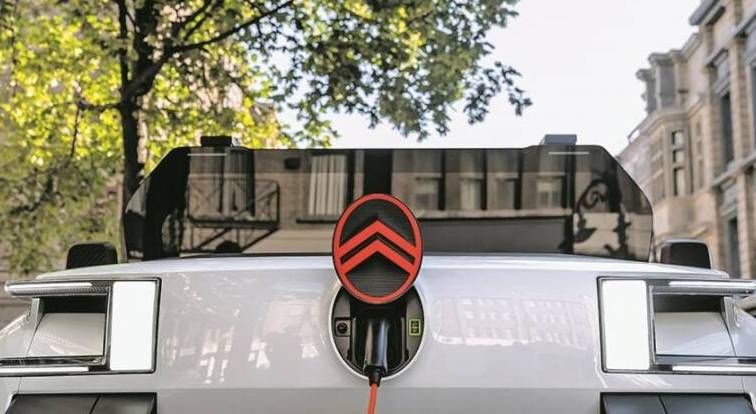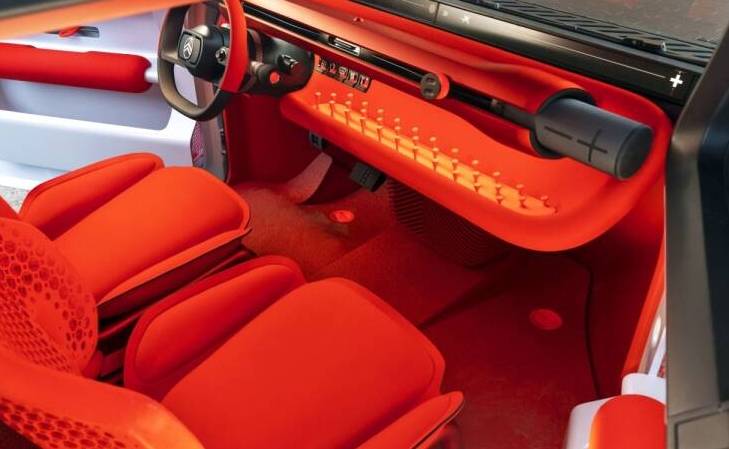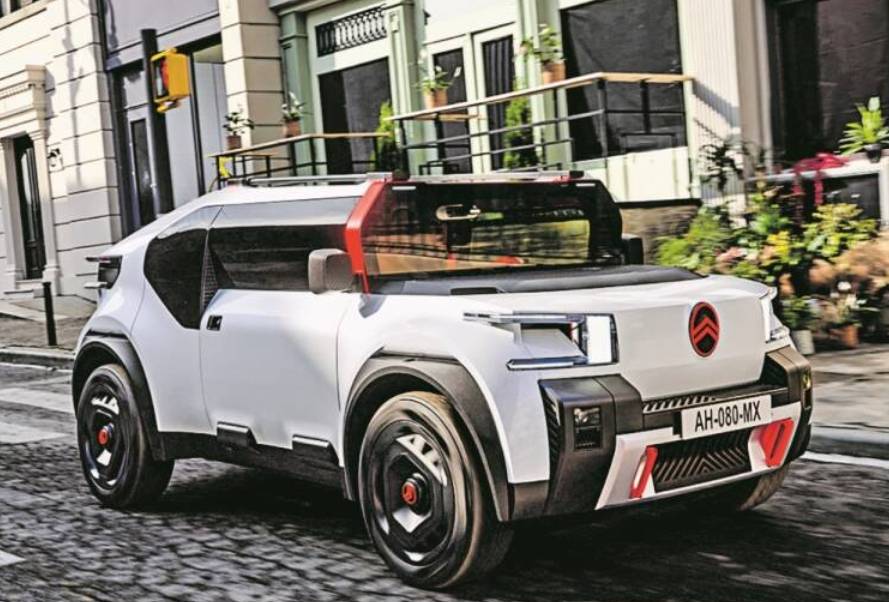Citroën’s Oli concept car showcases a more sustainable approach to electric vehicles and offers a refreshing departure from the current trend of larger, pricier, and heavier cars. The one-of-a-kind vehicle, which made a splash at the Paris Motor Show in September, is now on a European tour and recently stopped in Vienna.
Citroën Oli meets the need for attractive but cost-effective and resource-saving mobility
Citroën’s willingness to embrace unconventional ideas was demonstrated with the release of the Ami electric micro-car, which has received positive feedback. The larger Oli, however, is considered a successor to the Ami. Rather than being a typical heavy car with numerous screens and gadgets, the Oli is referred to as a “mobile laboratory” designed to meet the demand for affordable and environmentally friendly transportation.
The underlying concept is straightforward: in the 1970s, a typical family car weighed approximately 800 kilograms, was 3.7 meters long, and 1.6 meters wide. Nowadays, current models weigh over 1,200 kilograms, measure at least 4.2 meters in length, and 1.8 meters in width. With the Oli, Citroën is challenging the automobile industry’s inclination towards heavier, more intricate, and more costly family cars, at least within the scope of this study. Instead, they question the established order and declare “stop.”
By utilizing new and especially lightweight materials and, most importantly, by omitting non-essential features, the Citroën Oli weighs only 1000 kilograms – making it significantly lighter than most comparable compact SUVs.

Unconventional materials and methods make the Citroën Oli lighter
According to Laurence Hansen, Citroën’s director of product and strategy, there is a cycle that perpetuates itself: in order to increase the electric range, you need a larger battery. However, more technology requires more power, which leads to the need for a bigger battery. This cycle leads to increased weight, complexity and cost. Furthermore, the heavier a vehicle is, the less efficient it becomes.
By using unconventional materials and methods, the Oli was able to achieve a low weight, which means that it only requires a relatively small battery to achieve a fully electric range of 400 kilometers. The Oli’s weight reduction was made possible through the use of recycled corrugated cardboard in the flat bonnet, roof, and rear cargo area. These cardboard plates were formed into a honeycomb structure, reinforced with fiberglass panels, and coated with polyurethane resin. Compared to conventional steel constructions, these plates are 50 percent lighter, yet still provide high stiffness, lightness, and stability.
Similar to the Citroën Ami, the Oli’s front doors are symmetrical, but with opposing hinges. This not only reduces weight but also simplifies manufacturing and assembly, resulting in a cost-saving. Furthermore, 20 percent less components are used, resulting in a weight reduction compared to standard family station wagons. By omitting loudspeakers, soundproofing material and electrical wiring, 1.7 kilograms were saved per door.
The Citroën Oli boasts an eye-catching, steep windscreen. According to Citroën designer Pierre Sabas, while a vertical windscreen may be less aerodynamic, the Oli’s intended speed range doesn’t warrant such concerns. To mitigate the potential drag, an experimental “Aero Duct” system on the front hood creates a curtain effect, reducing the aerodynamic disadvantages of the vertical pane. Additionally, the shorter distance between the top and bottom of the windscreen reduces the amount of glass required, resulting in a lighter and less expensive pane. Furthermore, less sunlight entering the car’s interior will allow for up to a 17% reduction in power consumption by the air conditioning system. The Oli also takes an unconventional approach to wheels.

Due to the high cost and energy consumption associated with aluminum wheels and the weight of steel wheels, the creators of the Citroën Oli chose to use a hybrid combination of both materials for the wheels. This resulted in 20-inch hybrid wheels, which not only save a total of six kilograms in weight but also run on environmentally friendly Goodyear tires. The tires are made of plant-based or recycled materials, making them particularly sustainable.
The interior of the Citroën Oli is also extremely different
The Citroën Oli study presents a simple and minimalist dashboard made up of only 34 parts, instead of the usual 75. The infotainment system is operated through a smartphone that docks into the central socket, eliminating the need for multiple screens and hidden computers. The audio system also works via Bluetooth speakers that can be docked into the hollowed ends of the dashboard. This approach not only reduces complexity but also enables the car to be easily upgraded with new technology in the future.
The seats in the Citroën Oli are not only marvels of technology but also impressively minimalist. These office chair-like seats are made from 100% recycled materials and were produced using 3D printing technology. With 80% fewer individual parts, they weigh only a fraction of conventional seats.
